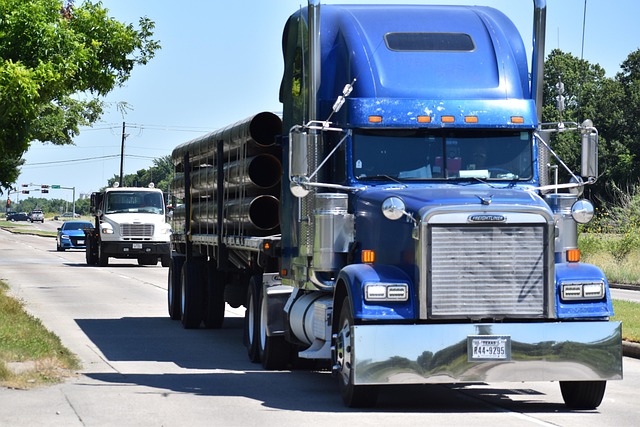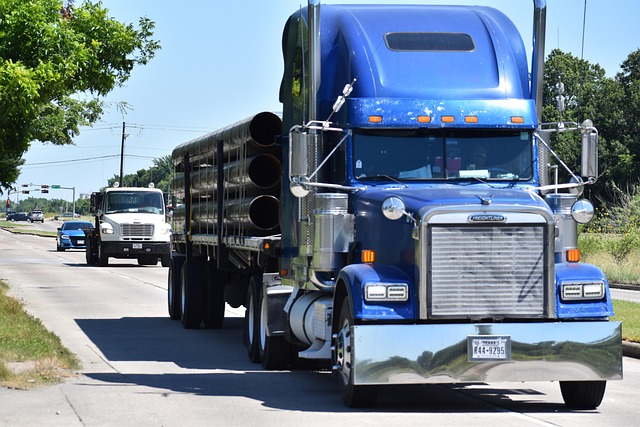Looking to register your car in California? Navigating the process can seem daunting, but with the right preparation, it doesn’t have to be. This comprehensive guide breaks down every step of registering a vehicle in CA, focusing on the crucial DMV VIN verification process. From gathering essential documents to addressing common issues, you’ll find everything you need to know to ensure a smooth registration experience.
- Understanding the DMV VIN Verification Process
- Gathering Necessary Documents for Car Registration
- Step-by-Step Guide to Registering Your Vehicle in California
- Common Issues During Vehicle Registration and How to Fix Them
- Post-Registration Tasks: Maintaining Your California Car Registration
Understanding the DMV VIN Verification Process

When registering your car in California, understanding the DMV’s Vehicle Identification Number (VIN) verification process is crucial. The state requires a VIN inspection to ensure the vehicle’s authenticity and history. During this process, a qualified inspector checks the vehicle’s unique VIN against various databases to verify its identity, mileage, and any reported damage or previous accidents. This step is essential for preventing fraud and ensuring consumer safety.
California offers both in-person and mobile vin verification services, including options for those who prefer a convenient, on-site inspection. Mobile vin verifiers can provide quick and reliable assessments, saving you time and effort. In the event of discrepancies or issues, the inspector will notify you before completing the necessary paperwork to register your car, ensuring a smooth transition.
Gathering Necessary Documents for Car Registration

Before you start the registration process, ensure you have all the required documents for a smooth experience. The California Department of Motor Vehicles (DMV) requires several key pieces of information during car registration. One crucial document is the Vehicle Identification Number (VIN) verification report. This can be obtained through a vin inspection, which involves checking the vehicle’s unique identifier against the manufacturer’s records. You may opt for a traditional vin inspection at a designated location or use a mobile vin verifier for convenience, allowing you to complete this step from almost anywhere.
Additionally, gather your car’s registration documents from previous states (if applicable), proof of insurance, and identification materials such as a valid driver’s license or state ID card. These documents are essential for the DMV to process your registration request accurately and efficiently.
Step-by-Step Guide to Registering Your Vehicle in California

Registering a car in California involves several steps, but with the right preparation, it can be a straightforward process. First, gather all necessary documents, including your vehicle’s registration certificate from the previous state, proof of insurance, and a valid driver’s license. Then, visit the California Department of Motor Vehicles (DMV) website to initiate the registration process online or at a local DMV office.
Next, perform a DMV vin verification by providing your vehicle identification number (VIN). This step ensures that your car matches the information on record and helps prevent fraud. You can complete this process using a mobile VIN verifier for added convenience. After successful verification, pay the registration fees, which may include a title transfer fee if you’re transferring ownership. Once approved, you’ll receive your California vehicle registration documents, plates, and stickers, marking the completion of the registration process.
Common Issues During Vehicle Registration and How to Fix Them

When registering your car in California, one common issue that arises is the failure of the DMV (Department of Motor Vehicles) vin verification process. This can be attributed to a variety of factors, including incorrect or incomplete vehicle information, inaccuracies on the vehicle’s title, or issues with the vehicle’s history report. To resolve this, ensure all details provided are accurate and up-to-date. Double-check the Vehicle Identification Number (VIN), as even a minor error can cause delays.
Another frequent problem is the inability to complete a mobile vin verification or inspection. This might occur due to technical glitches in the system or issues with your device’s compatibility. To fix this, try using a different device or browser, clear cache and cookies, or contact the DMV for assistance. A quick check of your vehicle’s history through a reliable mobile vin inspection service can also prevent such hiccups. Keep important documents handy and ensure they meet the required standards to streamline the registration process.
Post-Registration Tasks: Maintaining Your California Car Registration

After successfully registering your vehicle with the California Department of Motor Vehicles (DMV), there are several important tasks to complete to ensure your car remains legally compliant and safely operated. One crucial step is regularly updating your registration, which includes completing a DMV VIN verification process. This involves confirming the vehicle’s identity through its unique Vehicle Identification Number (VIN) to prevent theft and ensure record accuracy.
Additionally, scheduling periodic inspections like a vin inspection, whether done at a local facility or with the aid of a mobile vin verifier, is essential for maintaining your registration. These checks help identify any potential issues, ensuring your vehicle complies with safety standards. By keeping up with these post-registration tasks, California car owners can avoid penalties and keep their vehicles legally registered and roadworthy.
Registering a car in California involves several steps, from understanding the DMV VIN verification process to gathering essential documents. By following our step-by-step guide and addressing common issues, you can ensure a smooth registration experience. Remember that maintaining accurate records and staying informed about post-registration tasks are crucial for keeping your vehicle’s registration up to date. With these tips in mind, you’ll be well on your way to successfully registering your vehicle in the Golden State.



